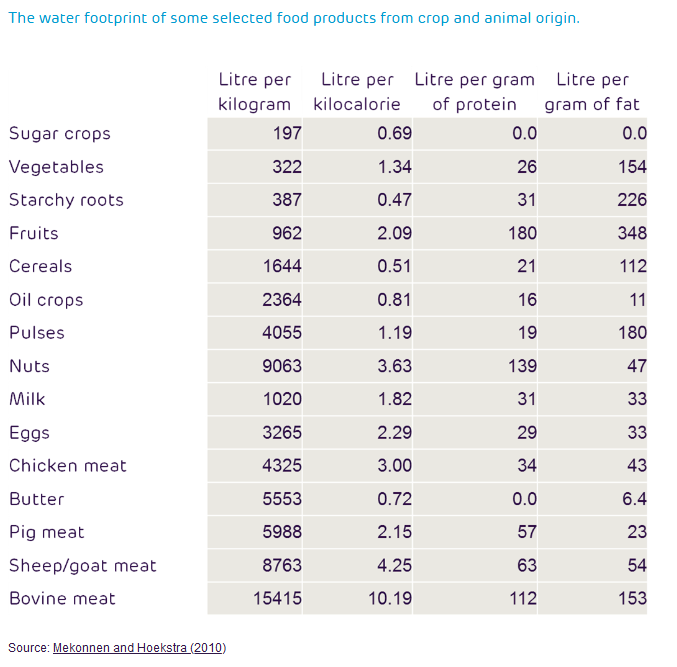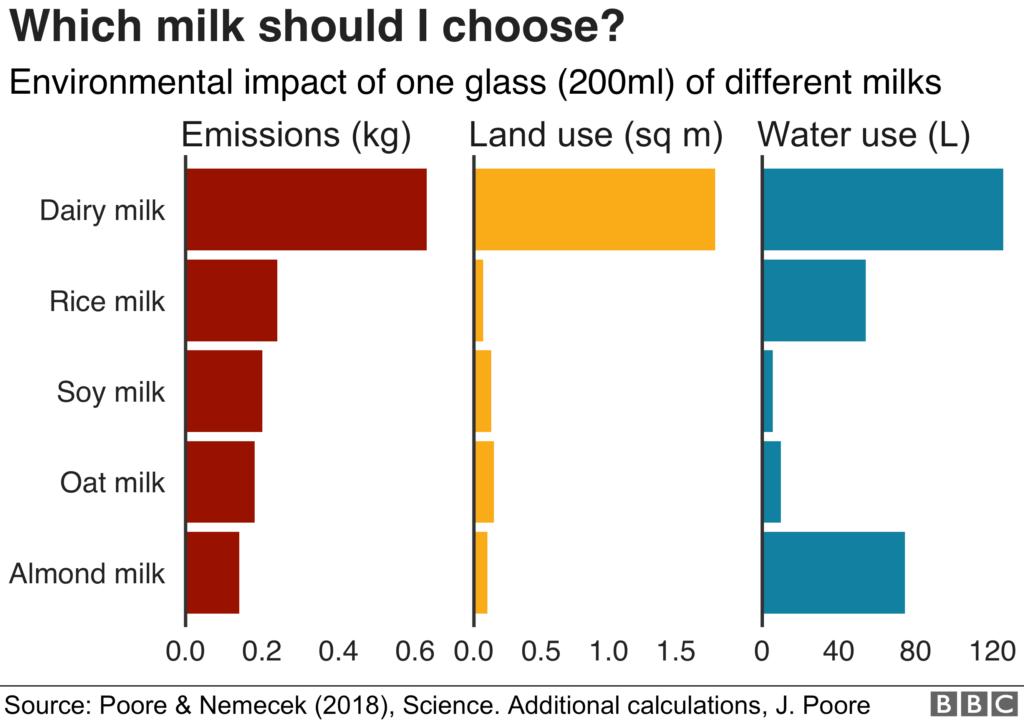Is Dairy-Free Better for the Environment?
By Jeanne Yacoubou, MS
The VRG recently received an email from a high school student. He needed an outside source for a research project and turned to us.
He asked: Why is dairy-free better for the environment?
Here is our response:
There are many ways to approach the question.
From a water usage perspective, it takes more water per calorie and per gram of protein to produce dairy milk compared to some types of crops used in dairy-free milk but not all. In the table below, use “oil crops” for soymilk; “cereals” for oatmilk; and “nuts” for nutmilks.

Here’s the reference: https://waterfootprint.org/en/water-footprint/product-water-footprint/water-footprint-crop-and-animal-products/
Interestingly, dairy butter has a lower water footprint (for some parameters) than other sources of fat.
Here is an article that’s easier to “digest” than the previous one: https://waterfootprint.org/media/downloads/Hoekstra-2012-Water-Meat-Dairy_2.pdf
Here’s one that looks at soymilk v. cow’s milk:
You can also consider the carbon footprint (greenhouse gas emissions) of foods. Here’s a great resource:
In terms of carbon emissions, rice and nutmilks are worse than soy and cow’s milk as you see summarized here: http://www.greeneatz.com/foods-carbon-footprint.html
The rice is particularly bad because of methane production.
However, other researchers have come to different conclusions:

This source sheds more light on the life cycle assessment for soy v. dairy milk. Look especially at Table 3 on p. 18. According to this reference, soy is better for the environment than dairy milk. But, this article was written before the Amazon fires, so it’s not up-to-date. http://envormation.org/wp-content/uploads/2015/08/Soy-milk-an-attributional-Life-Cycle-Assessment-examining-the-potential-environmental-impact-of-soy-milk.pdf
This article places the topic in a larger perspective:
https://www.ncbi.nlm.nih.gov/pmc/articles/PMC4672819/
